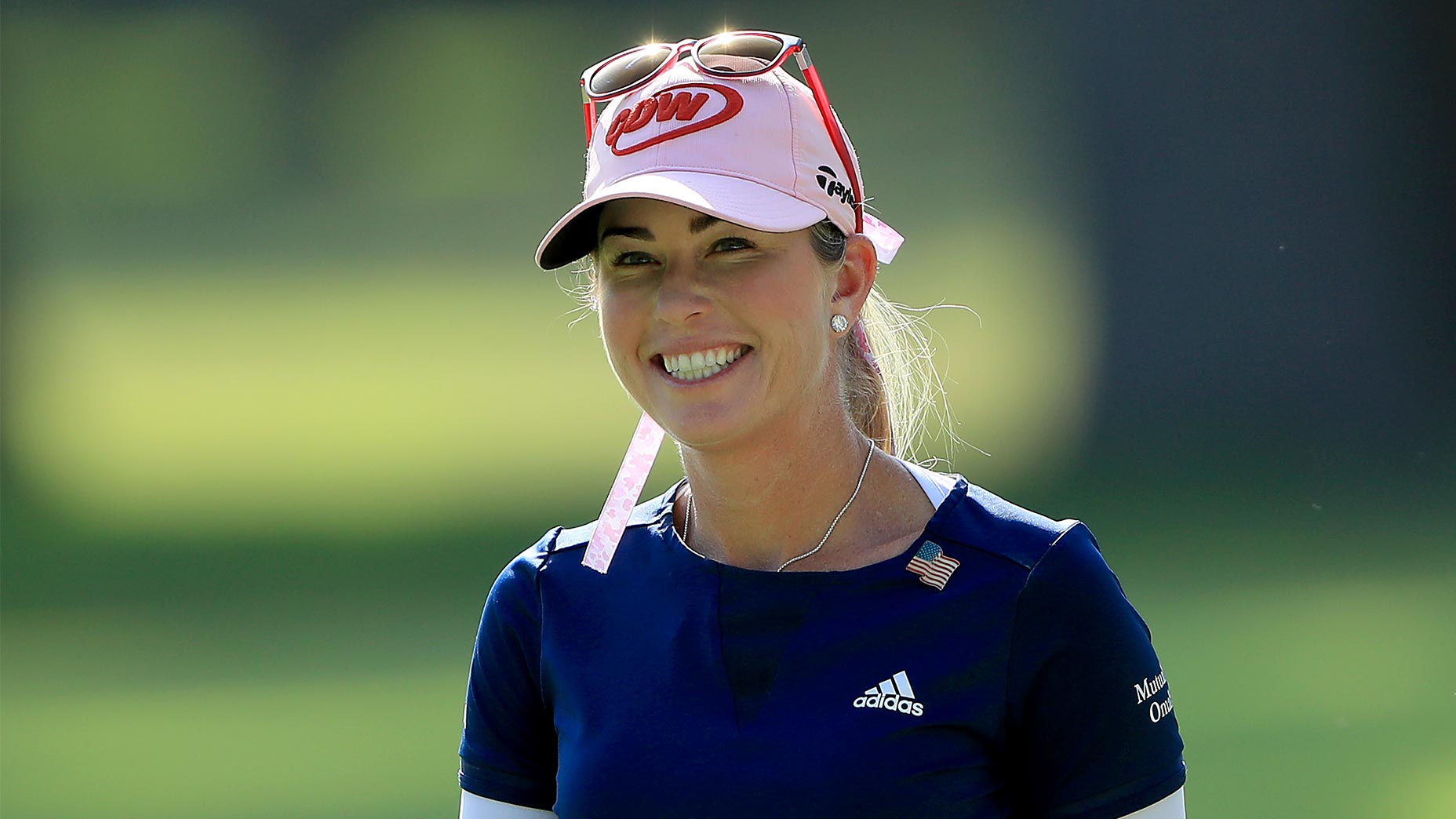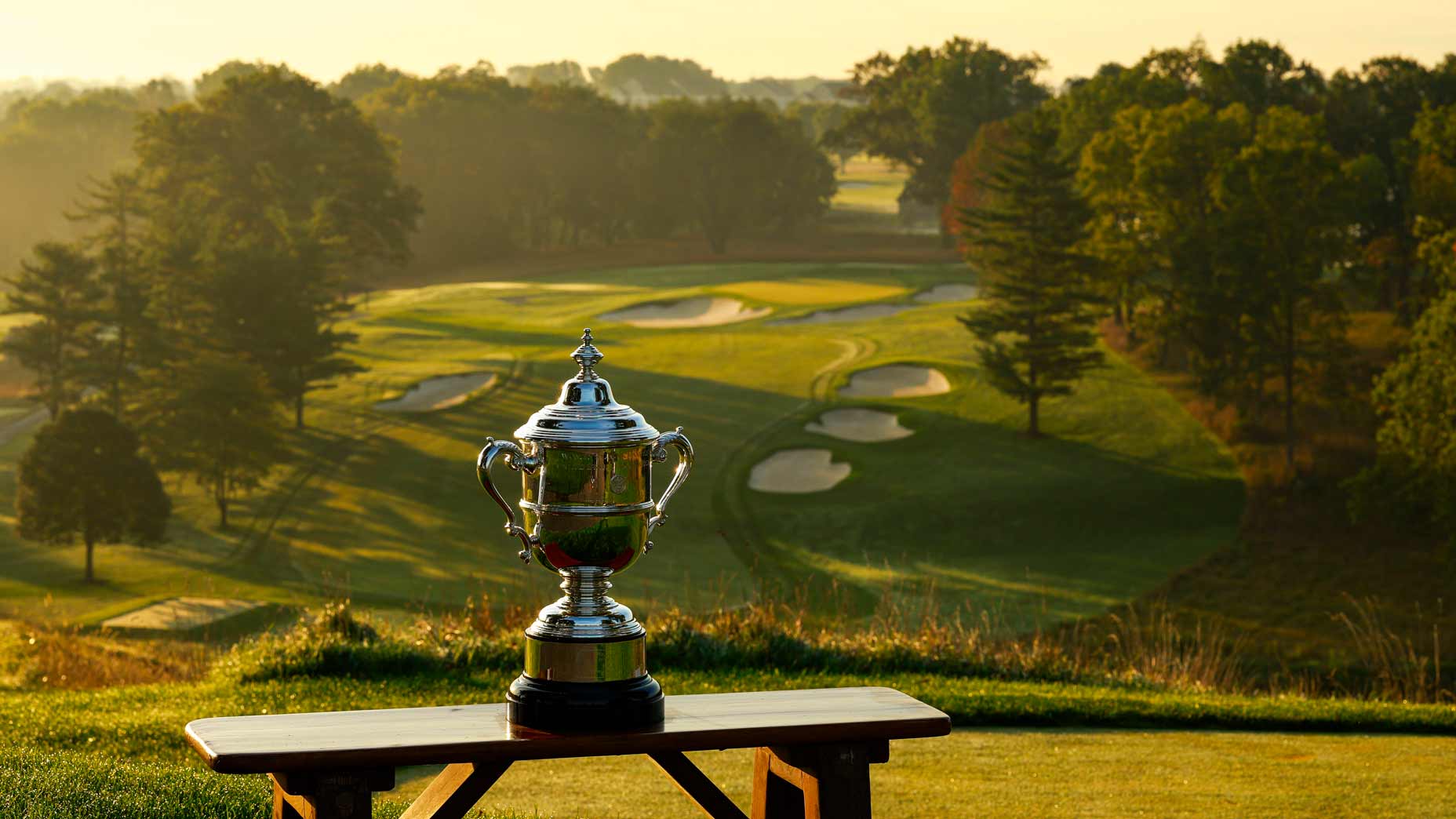SAN FRANCISCO — It’s not easy to make history at the Olympic Club. “The O Club,” as the locals have dubbed it, sits at the center of the Bay Area’s impossibly cool golf scene — a tapestry of public and private golf stitched into a metropolis. The club has seen it all since it assumed control of Lakeside Golf Club 103 years ago and transformed into what we now know as the Lake Course. U.S. Opens, celebrities, Hall of Famers, tech billionaires, Silicon Valley schmoozers, hippies — you name it, Olympic knows it.
The Olympic Club was here when San Francisco was an old-world town, and it’s remained untouched on its perch atop Lake Merced even as the city around it has morphed into a gluten-free, chai-tea-sipping hipster haven. In all likelihood, the O Club will still be here long after our alien overlords kick everyone out of the Bay Area on account of the rent being too damn high.
Yet, in more than a century of golf goodness, likely only one dummy has rolled through the pearly gates in a souped-up, early-2000s Toyota Prius brandishing at least a dozen large, carefully applied anime decals. That interloper — the one with clubs in his lap, visible through the tinted windows just above the faded Naruto and Garfield stickers — was me in late-April, when I played the course for the first time.
When my editor first tasked me with the herculean assignment of playing a super-elite private course in a part of the country I’d never visited for the U.S. Women’s Open preview day, I had a few talking points in mind. I was excited to learn about “West Coast golf,” and “the impact of the marine layer” — perhaps I’d even settle the great Bay Area burrito debate.
Yes, I did test West Coast golf (awesome), I did have the finest burrito of my adult life (at El Farolito’s in the mission district) and I even learned a thing or two about Bay Area grocers (Mulberry’s in Piedmont is the finest local shop in all the land; the coffee is delectable). But when I caught the gate attendant stifling a laugh when he realized we had not, in fact, made a wrong turn, it hit me. The most impactful lesson of my trip was one I could have learned 3,000 miles closer to home: Sometimes, it’s worth springing for an Uber Black.
Here are 5 other lessons from my rollicking day at the Olympic Club.
The ‘it’ factor is no-joke
I haven’t had many luxe golf experiences, but the few I’ve had can’t compare to the O-Club. The red-carpet rollout was real, accentuated by a delightful breakfast on the patio outside the posh clubhouse. You can see it all from the tiny seating area — the golf courses, the Bay Area, even the Golden Gate. It’s hard not to burn with excitement looking out at what’s soon to come.
Inside the clubhouse, things aren’t much different. Large windows in the banquet hall overlook the Bay Area skyline, while the hallways are littered with iconography from the club’s lengthy history.
Neither is the ‘carnage’ factor
Olympic isn’t visually daunting off the tee, but it’s tight, winding, and its demands are remarkably precise. Miss a fairway by a few feet and you’re hacking it out of a tuft of rough. Hit an iron to the wrong side of the green and you’re lucky to escape with a three-putt. Blind approaches and heavily protected greens leave few areas for a bailout. I’m an 80s-shooter on an average day, and on a bad day at the O-Club, I struggled to keep my score below 100.

It’s not easy, but not impossible
If you’d like to record a decent score, might we suggest a different U.S. Women’s Open venue? But if you’d like to have an enjoyable afternoon with friends, you could do far worse than Olympic.
That’s because the course, even for its challenges, leaves players with plenty of room to miss on either side of the fairway. The yawning gum trees come into play on a handful of holes, but largely are only consequences of huge misses. If you’re able to keep your ball on the planet, it’s likely you’ll enjoy the challenge of the Lake Course, largely because it won’t penalize you with lost balls and impossible recoveries.
I’m not much of an architecture buff, but for my money, courses are at their best when they make the distinction of being hard, but not impossible. Olympic has that in spades.
Can(ted) handle it
If you’re planning to watch this week’s Women’s Open (which will be available largely commercial-free), pay attention to the slope of the fairways — you’re sure to hear plenty about them. The “canted fairways,” as they’re called, are the principle design feature of architects Sam Whiting and Willie Watson’s work at the Lake Course.
On dogleg-rights, the fairways slope to the right, on dogleg-lefts, they slope to the left. While the difference is negligible to the untrained eye, the small feature completely shifts the strategic value of the hole. A good drive to the wrong side of the fairway can lead to an awkward approach shot, which can lead to a big number.

Burgerdogs, dawg
Burgerdogs are, for the moment, this burgeoning golf food-reviewer’s pick for finest halfway house snack in the sport. They’re sure to give you a coronary, but these burgers-shaped-like-hot dogs from Hot Dog Bill’s halfway house are some of the most delicious, fulfilling artery-clogging snacks that have EVER existed in golf.
I entered the Lake Course under strict instructions from a handful of Bay Area locals to order “the works.” After some prodding, I received a franken-burgerdog — half-burgerdog, half-topping — replete with onions, peppers, pickles, mustard, ketchup, relish, hot sauce, and all other order of beautifully excessive accessory. It took me only a few minutes to scarf it down, and I’ve savored the taste ever since.











